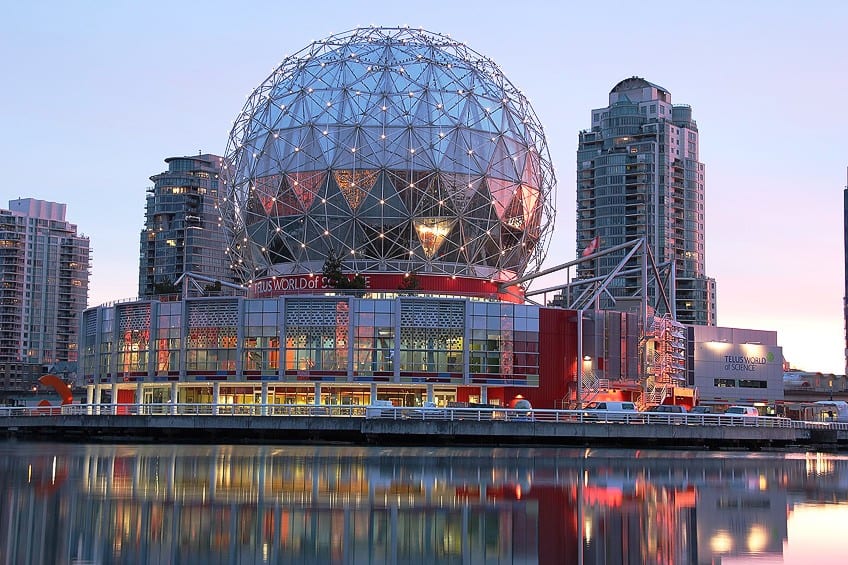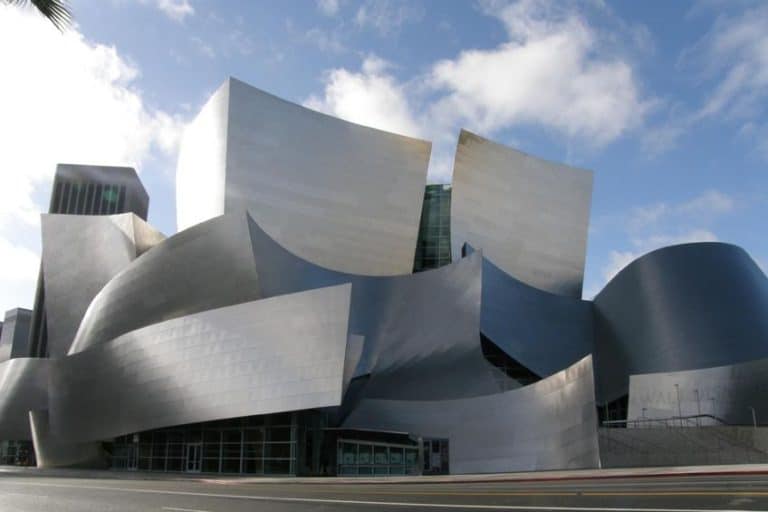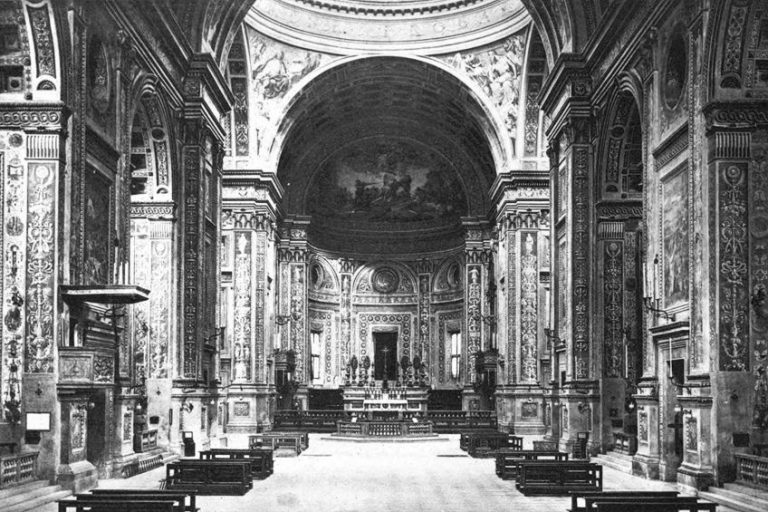Tensegrity Architecture – Explore the World of Tensegrity
What is tensegrity? What is tensegrity architecture? Are there any real-world tensegrity examples? All of these questions are worthy ones that should be further interrogated, and that is what we are going to do today. This article will examine a number of different applications of tensegrity, how it works, who developed it, and perhaps how it can even be used in the future. If you also want to learn about tensegrity architecture, keep reading!
A Look at Tensegrity Architecture
Tensegrity architecture is a rather fascinating thing because of how it appears to defy the laws of physics while obviously adhering to said laws (or else these tensegrity structures would simply collapse). The concept is somewhat difficult to explain but easier to understand when one sees a structure that has been developed using tensegrity designs.
The basic premise is that tensegrity structures are designed using both rigid and flexible elements to produce a structure that is both lightweight and strong.
The rigid elements of tensegrity designs are things like tubes, bars, or beams, and they do not stretch, bend, or alter under any pressure. The flexible elements, on the other hand, are things like wires and cables that can bend and stretch. The way that they are arranged is in such a way that all of the rigid elements never touch one another while all of the flexible elements are held together through tension and compression. This, despite the eye struggling to accept it, allows the structure to support itself, and it does not require any additional support structures at all.
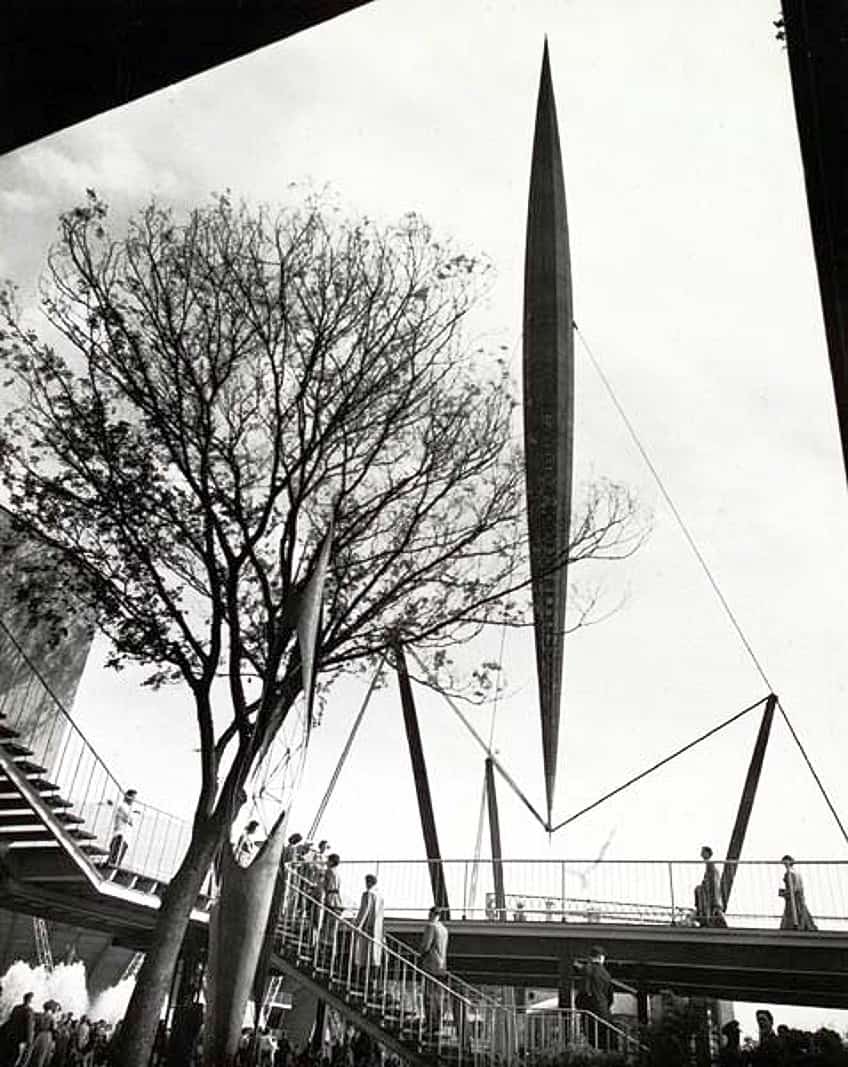
For this reason, tensegrity does not generally tend to be more livable structures, as there are no tensegrity houses, but the method is instead used to supplement other structures or to be used in things like bridge design, roofs, and sculptures. They are incredibly lightweight, thanks to the lack of elements throughout the design, and as such, they are highly efficient and adaptable.
Not to mention the fact that they tend to be pleasing to the eye as they seem unusual or impossible despite being very possible.
This is why tensegrity designs have become quite influential on modern-day architecture because of the applications of self-supporting structures using tensegrity methods. A few tensegrity examples include the Needle Tower in Washington, D.C., United States, and the roof structure of the Munich Olympic Stadium in Munich, Germany.
Unraveling the Tensegrity Concept
Let’s take a look at the tensegrity concept itself. How does it work? As has been mentioned, tensegrity designs are made up of rigid and flexible elements within a single system, and each of the elements within this isolated system is acting under compression. However, while the elements experience compression, they are simultaneously in a state of continuous tension.
The combination of rigid and flexible elements alongside both compression and tension leads to an internal balance between the elements, and as long as these rigid elements do not then touch one another, the system will remain standing as the flexible elements keep the whole structure in place.
Thanks to this, tensegrity architecture and other designs are in defiance of the norms that have underpinned traditional architecture since its inception.
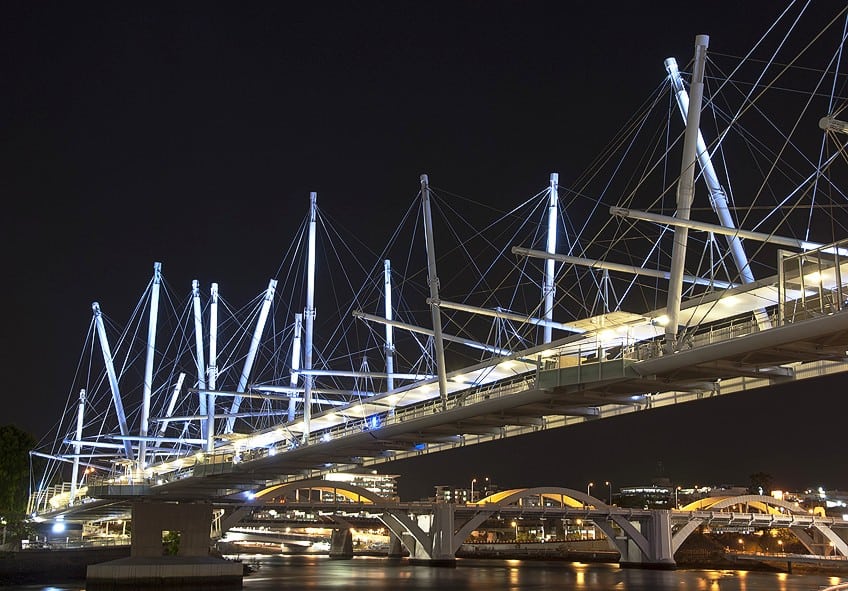
Tensegrity examples, such as the sculptures and bridges that make use of this method, do not need to have foundations, columns, beams, joints, or any other support element that one may ordinarily expect of such a design. This is perhaps where it is best to say that tensegrity structures are not actually man-made but rather do also exist in nature. They can be found in cells, bones, and viruses, but we have learned how to adapt these natural forces of nature to our own needs to develop something entirely new to us.
Now that the method has been explored, it is time to learn about who figured this out for wider human use.
Buckminster Fuller: Pioneering Tensegrity in Architecture
| Architectural Style | Futurism |
| Years | 1895 – 1983 |
| Place of Birth | Milton, Massachusetts, United States |
| Known For | Tensegrity and the geodesic dome |
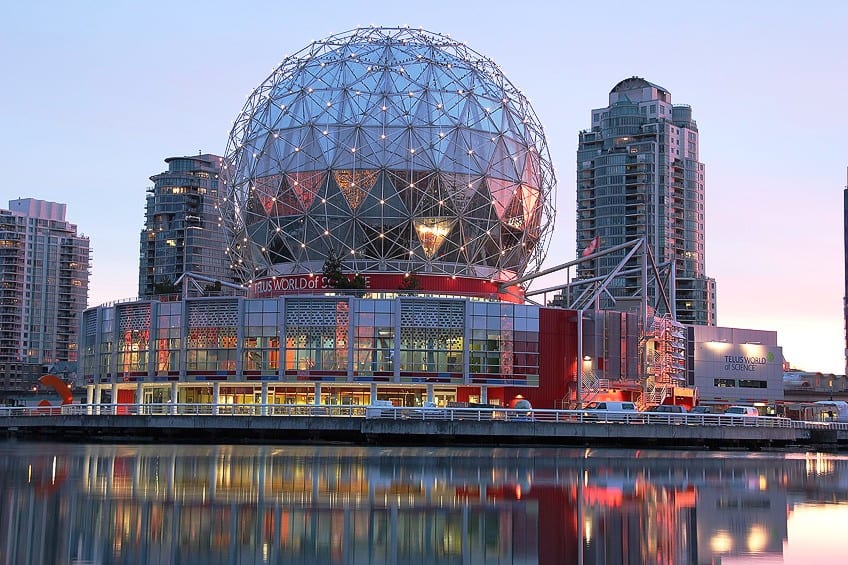
Buckminster Fuller was an architect and inventor who went on to have a large influence on both design and architecture, and he is best known for his invention of the geodesic dome (which is a spherical structure made up of triangular elements to reduce the material used, and it is a common style in more futuristic designs). His various experiments with tensegrity designs came after some of his collaborations with a former student of his named Kenneth Snelson, who would go on to become a noted tensegrity sculptor (and there were disputes between them thereafter with Snelson claiming that Fuller had stolen credit for the idea).
It was Fuller who would go on to coin the term “tensegrity” though, and so his name has become forever associated with the method.
When working on this new understanding of tension and compression and how they could be optimized, it was determined that tensegrity designs could be greatly adapted over larger distances and with different materials. He committed to many experiments over the years to better understand this interesting and unique design. His experiments would go on to have a strong influence on many other architects and engineers who would then implement those ideas on far larger scales.
Tensegrity as a Structural Solution
One of the defining characteristics of tensegrity structures is that they are both strong and stable despite seeming to defy what we would ordinarily associate with those terms. This means that its lightweight and highly adaptable nature has allowed it to be usable in places where more traditional methods have ordinarily been used instead. Tensegrity designs can also be used in a variety of environments because a number of different materials can be used based on the location in which they are situated.
Some good examples of tensegrity architecture include the below tensegrity structures.
The Needle Tower (1968) in Washington, D.C.
| Architect | Kenneth Snelson (1927 – 2016) |
| Date Constructed | 1968 |
| Function | Tower |
| Materials Used | Aluminum and stainless steel |
| Height | 26.5 meters (or 86.9 ft) |
| Location | Washington, D.C., United States |
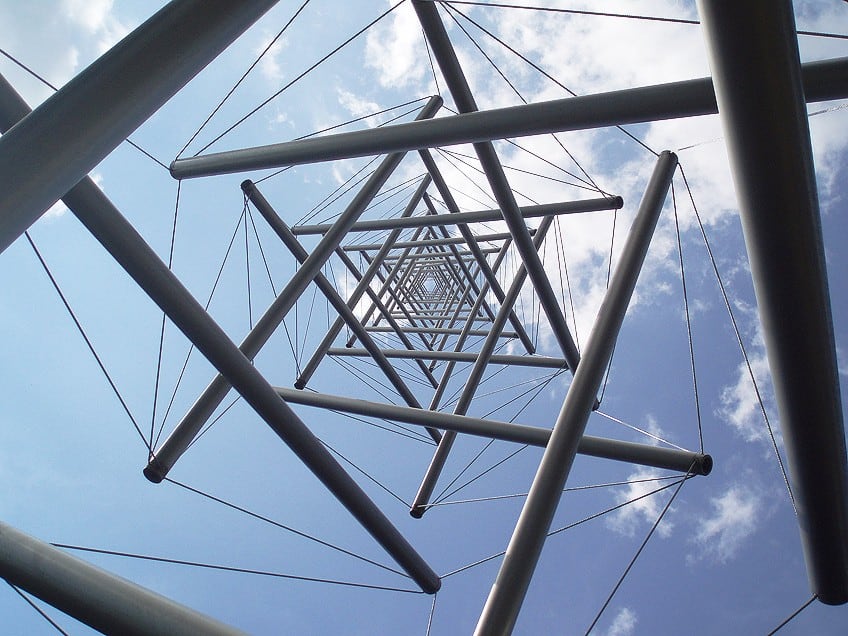
This architectural delight by Kenneth Snelson is a public sculpture that can be found outside the Hirshhorn Museum and Sculpture Garden that is located in Washington, D.C., United States. It is made of aluminum and stainless steel, and it has become, perhaps, the best-known example of tensegrity architecture. It is so named because of the tapering design that it makes use of to create a pointed top.
It has remained standing since its construction, but when it was restored, it needed to be done carefully to stop it from collapsing.
Munich Olympic Stadium Roof (1968 – 1972) in Munich
| Architect | Frei Otto (1925 – 2015) |
| Date Constructed | 1968 – 1972 |
| Function | Stadium roof |
| Materials Used | Steel and glass |
| Height | 30 meters (or 98.4 ft) |
| Location | Munich, Germany |

This is another of the most famous examples of tensegrity architecture. While the stadium itself does not make use of this structural method, the roof design of the stadium is a tensegrity structure. It is made up of thousands of steel cables that support an array of acrylic glass to produce a membrane design. This design also allows for the stadium to withstand wind and snow.
It has become one of the most remarkable instances of tensegrity architecture at work.
Tensegrity Skyscrapers: Reaching New Heights
While tensegrity architecture is certainly a new and innovative form of design, it has not quite been implemented on an incredibly large scale the kind of which one may see in something like a skyscraper, or at least not yet. There have been theoretical models that aim for something like this, but something incredibly large-scale has not yet been created using this method on its own.
It has more often been used in a supplementary capacity like the previously discussed Munich Olympic Stadium’s roof.
However, as skyscrapers have long attempted to find new and more efficient ways of attaining height while reducing the number of materials used, tensegrity architecture does provide an interesting avenue for further development and understanding of ways in which new designs could be attained. There are issues with tensegrity designs though, as they are vulnerable to various issues, such as structural stability and seismic disturbance.

For these reasons, tensegrity architecture is an interesting field for study and experimentation, but there are not yet any definitive concrete plans to make use of this method in skyscraper design. However, there are designers and architects who are working to better make use of this method, such as through solutions to some of the issues that are posed by tensegrity designs, such as by making use of hybrid materials, using other systems alongside tensegrity ones, and incorporating it alongside other parametric designs.
It may only be a matter of time before this method sees more widespread use, but we will have to wait and see.
Sustainable Tensegrity: Eco-Friendly Design
Tensegrity designs are, by their very nature, far more lightweight and adaptable than many other designs, especially those that make further use of more conventional methods. For this reason, tensegrity architecture and designs, in general, may be a strong contender for eco-friendly design going forward as these designs are fundamentally oriented around a reduction in the number of materials while also retaining strength.
This is why tensegrity structures may be a way forward for sustainable architecture, and while more work does need to be done to ensure that this is the case, tensegrity structures do provide a good avenue for further research into sustainable design.
There is work to be done though, and so while tensegrity architecture may have more naturalistic forms and could better position itself as a sustainable model in the future, it does have a number of issues. Some of the issues have already been explored, such as those oriented around the inherent structural issues that larger and larger tensegrity structures may pose, and so as a tensegrity design is expected to do more, there may be an overwhelming amount of stress placed on the system that keeps a tensegrity structure afloat, and that could lead to such designs becoming unviable in the long term.
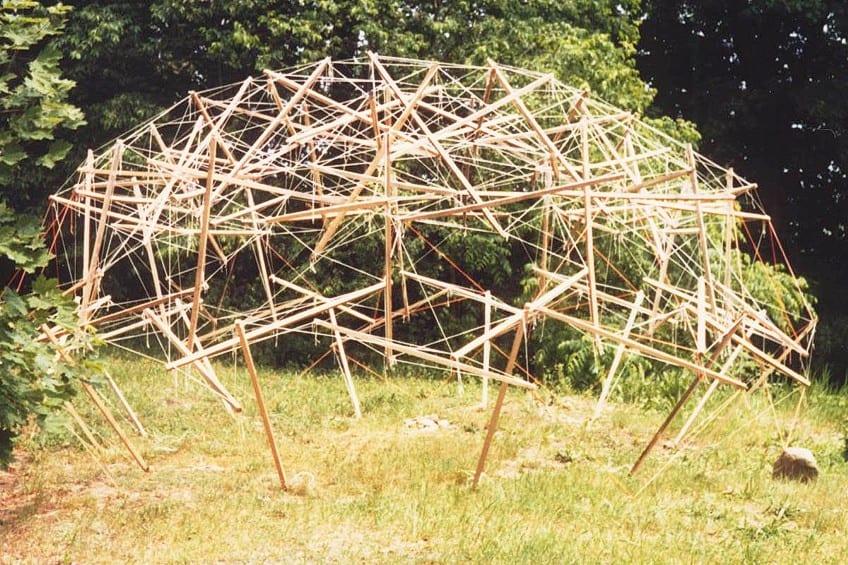
It may also be difficult to integrate certain elements into a tensegrity design, such as insulation and ventilation, but it certainly is still something that is worth experimenting with to determine the best way to approach something like this. However, tensegrity architecture is not definitively more sustainable than any other type of design method, but it could be used as a means of further developing sustainable methods.
This will especially be the case once further research has been performed and some of the issues inherent in these designs can be ironed out and improved upon.
Tensegrity Bridges: Bridging the Gap
One of the most innovative uses of tensegrity architecture is in the use of it as a method for the construction of bridges. This does not necessarily mean that a bridge will make complete use of a tensegrity design and will not implement other elements alongside these, but it can form an integral part of the understanding of how we can better construct bridges.
Bridges that make use of tensegrity architecture methods are far more lightweight and have a reduced environmental impact because of that.
Their lightweight nature also allows them to better span long distances without needing to resort to large and unwieldy structures that may otherwise be undesirable in a natural landscape. Additionally, tensegrity bridges can be adapted to better withstand the changing of the load that is pressed against the bridge, and so this can mean that bridges that make use of this method are as sturdy as any other kind of bridge.
Furthermore, the somewhat bizarre and often seemingly illogical arrangement of the different elements that make up a tensegrity system can be visually appealing to the eye and so it may become a desirable trait to have in a bridge or any other structure for that matter. However, using tensegrity designs in a bridge does mean that it needs to be combined with control systems to regulate it and to ensure that it does retain its shape and form.
And much like the issues with tensegrity designs being used in sustainable architecture, there can be difficulties in implementing certain aspects of necessary design into these structures, such as lighting and drainage.

There are a number of bridges that make for good tensegrity examples, such as the Kurilpa Bridge in Brisbane, Australia. However, the tensegrity design method is still one that requires a significant amount of work, but it may see far wider application in the years to come.
Deployable Tensegrity: Mobile and Versatile Structures
One of the greatest advantages of tensegrity structures is that they are highly adaptable and can be easily altered and deployed. They can generally be taken apart, folded up, and set up in new environments. This contributes to their immense versatility and shows great promise for how they may be used in the future.
For instance, one of the best areas in which tensegrity designs may have fantastic application is in disaster relief.
A tensegrity structure could be assembled far more quickly than any other traditional designs, and this could allow for better shelter in emergency situations or for actual rescue applications as tensegrity structures can withstand shocks by their very nature. For example, tensegrity robots would be immensely helpful in situations such as this. However, the applicability of tensegrity robots will be discussed in some more detail below.
Tensegrity Art Installations: Where Architecture Meets Art
Tensegrity architecture may be one of the potential applications of this particular design, but there are other areas in which tensegrity designs can be implemented. In fact, some of the most prominent tensegrity designs have been sculptures, and these sculptures combine architectural elements with artistic expression, such as the already mentioned Needle Tower sculpture.
Furthermore, tensegrity designs can, by their highly adaptable nature, be used for art exhibitions in a more technical sense.
A tensegrity structure can be assembled quickly and in practically any terrain, and so there would be no need to create or find an exhibition space if a tensegrity structure is instead assembled and used in its place. This works doubly as a means of allowing for lightweight and cheaper exhibition venues for artists, but it also operates as a form of art in its own sense.
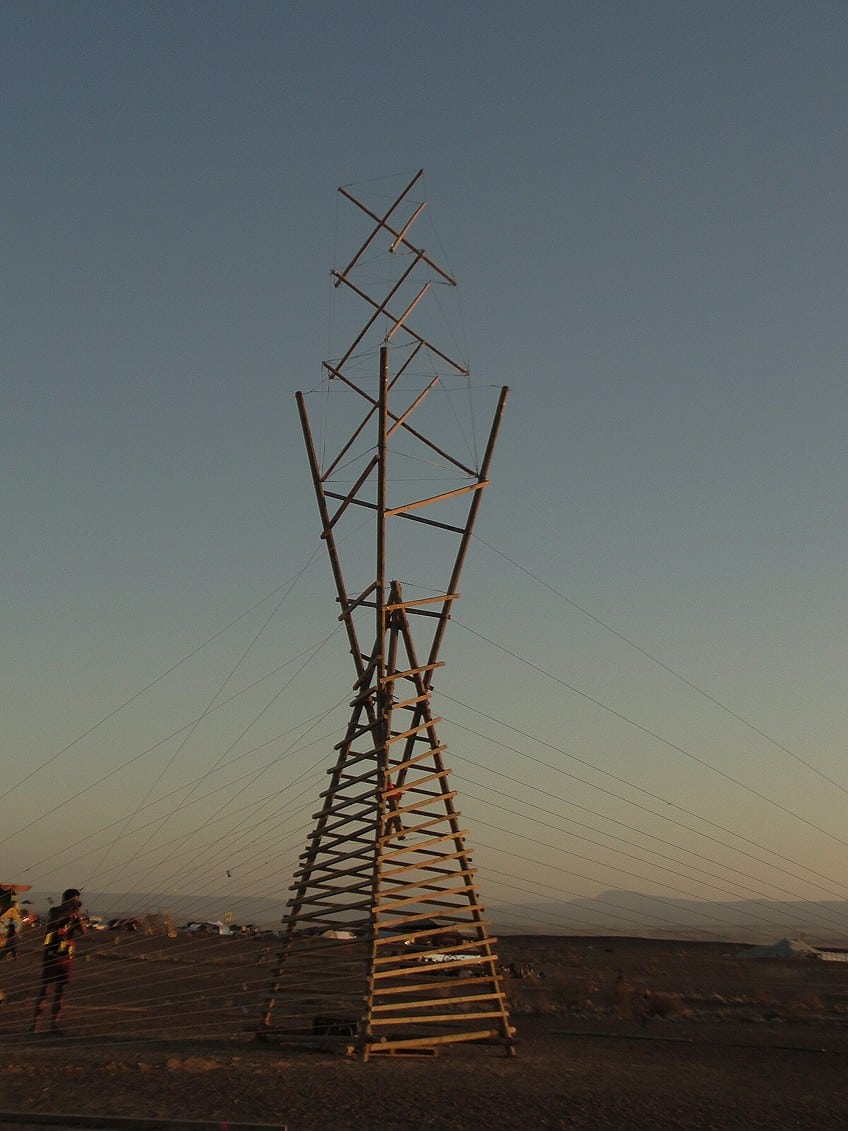
Tensegrity designs are unlike practically anything else out there, and for this reason, and because of the architectural ability required for their creation, they have created a bridge between architecture and more traditional artforms. They can allow for new and innovative artistic expression the likes of which have not been determined until now.
However, there is still much that can be done with tensegrity designs, and so there is still likely a lot that can come from this technology in the coming years.
Tensegrity in Bio-Inspired Design
Tensegrity is something that does also exist in nature, and as such, certain elements of tensegrity design can be taken from natural places. For instance, a spine is a kind of tensegrity structure as it is made up of rigid vertebrae structures and flexible ligaments, and this allows it to retain a high level of structural integrity while also being moveable and adaptable.
Elements such as this have led to certain aspects of tensegrity design being taken from nature, and so one can learn how to develop architecture and other designs through an understanding of the natural world. This simply goes to show that the natural world has a lot to offer us and that we can learn a lot if we simply listen to what it has to say.
Tensegrity Robotics: The Future of Responsive Architecture
Tensegrity robots are another example of the many ways in which tensegrity designs can be implemented, and these robot designs allow for the design of robots that are far more adaptable to certain environments over others. These robots are therefore lightweight, resistant to various stresses, and are able to absorb impacts without taking on any damage.
In addition to this, tensegrity robots are generally modular in their design, and this means that they can be reworked and redeveloped into new forms for different purposes.
They are also highly scalable and can be made far larger or far smaller than one may achieve with other kinds of robot designs. And much like other tensegrity examples in design and architecture, they are energy efficient and can be easily deployed. This has made them useful for functions such as space exploration, and mimicry of biological beings, and they can even be used in navigating certain terrains that may be otherwise inaccessible to humans.
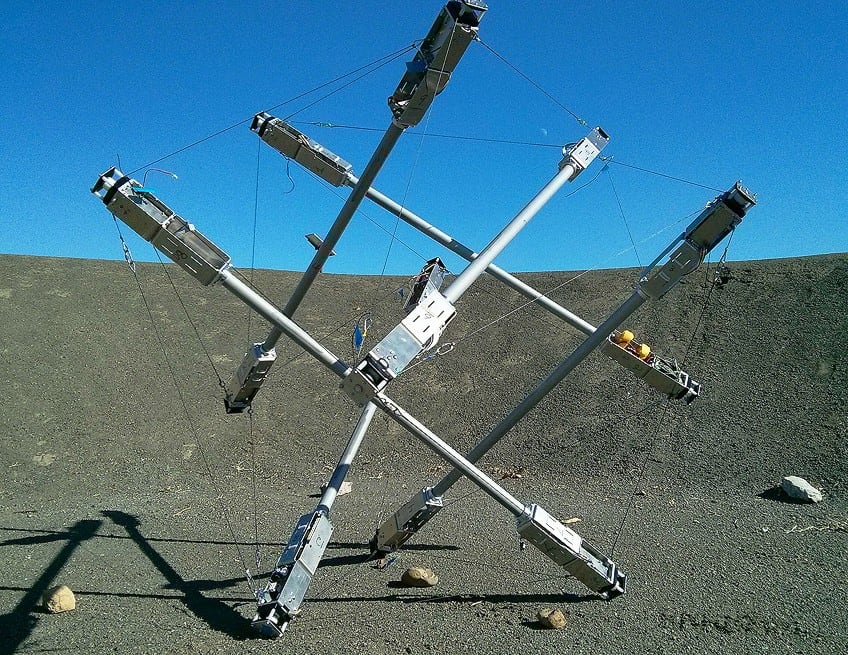
There are many different potential applications for tensegrity designs, and these can include tensegrity architecture and even robots. It truly is a fascinating system that we have discovered how to manipulate, and there will likely be even more innovations in this space, but at the moment, we may need to wait until tensegrity architecture is implemented on a larger scale.
With that, we come to the end of our discussion about tensegrity architecture and design. It is a truly fascinating age in which we live because new technologies and understandings can crop up around every corner. This article has examined various uses of tensegrity designs and how they may be used in the future. However, there is still much to learn, and so you may need to keep up to date with this particular technology if you want to see where it goes next.
Frequently Asked Questions
What Is Tensegrity Architecture?
Tensegrity architecture is a relatively new field in architectural design that makes use of tensegrity designs within structures. At present, tensegrity structures are typically implemented alongside more conventional methods. However, there may be a greater future for tensegrity designs in architecture, as they have already been implemented in designs such as bridges. Perhaps we may even live in tensegrity houses at some point in the future.
What Are the Main Advantages of Tensegrity in Architecture?
Some of the primary advantages of tensegrity within architecture are that it is lightweight while retaining structural integrity, it is stable because of the tension and compression-based system that it is made up of, it can be easily adapted to a variety of situations, and it can be used to create efficient structures. Tensegrity designs are relatively recent though, and so there are still many disadvantages that need to be understood and fixed.
How Does Tensegrity Differ from Traditional Building Methods?
Tensegrity designs do not make use of many of the elements that are found in traditional architectural methods. For instance, there is no need for traditional foundations, joints, and other aspects that are usually found in architecture. However, this also leads to certain disadvantages in structural integrity, but this is why tensegrity is still primarily an area of study that has not seen widespread usage.
When Did Tensegrity Architecture Originate?
Tensegrity architecture is generally attributed to Buckminster Fuller, but Kenneth Snelson, one of his students, was the first to design a structure that could be called a tensegrity structure. For this reason, there have been disputes over who first made use of this concept. However, tensegrity designs can also be found in nature, so it may not even be accurate to say that it originates with humans at all.
Are There Any Famous Examples of Tensegrity Structures?
There are a number of tensegrity examples in the world, such as the Needle Tower sculpture by Kenneth Snelson in Washington, D.C., the roof of the Munich Olympic Stadium by Frei Otto in Munich, and the Biosphere by Buckminster Fuller in Montreal. However, there are a number of additional tensegrity examples that can be found in architecture, sculptures, and even robotics.
Justin van Huyssteen is a freelance writer, novelist, and academic originally from Cape Town, South Africa. At present, he has a bachelor’s degree in English and literary theory and an honor’s degree in literary theory. He is currently working towards his master’s degree in literary theory with a focus on animal studies, critical theory, and semiotics within literature. As a novelist and freelancer, he often writes under the pen name L.C. Lupus.
Justin’s preferred literary movements include modern and postmodern literature with literary fiction and genre fiction like sci-fi, post-apocalyptic, and horror being of particular interest. His academia extends to his interest in prose and narratology. He enjoys analyzing a variety of mediums through a literary lens, such as graphic novels, film, and video games.
Justin is working for artincontext.org as an author and content writer since 2022. He is responsible for all blog posts about architecture, literature and poetry.
Learn more about Justin van Huyssteen and the Art in Context Team.
Cite this Article
Justin, van Huyssteen, “Tensegrity Architecture – Explore the World of Tensegrity.” Art in Context. August 11, 2023. URL: https://artincontext.org/tensegrity-architecture/
van Huyssteen, J. (2023, 11 August). Tensegrity Architecture – Explore the World of Tensegrity. Art in Context. https://artincontext.org/tensegrity-architecture/
van Huyssteen, Justin. “Tensegrity Architecture – Explore the World of Tensegrity.” Art in Context, August 11, 2023. https://artincontext.org/tensegrity-architecture/.


